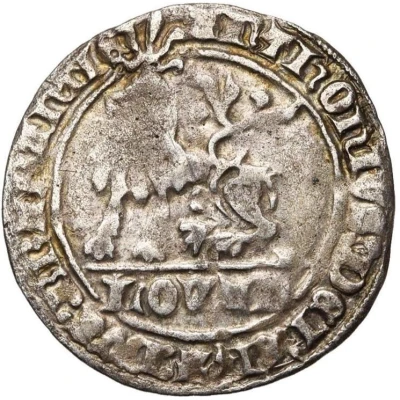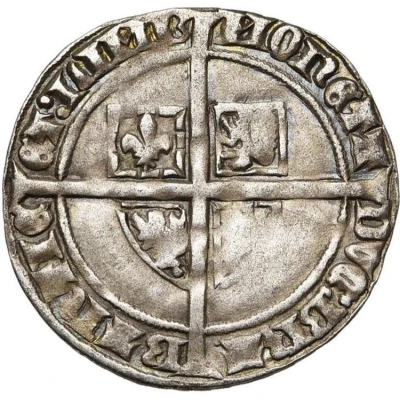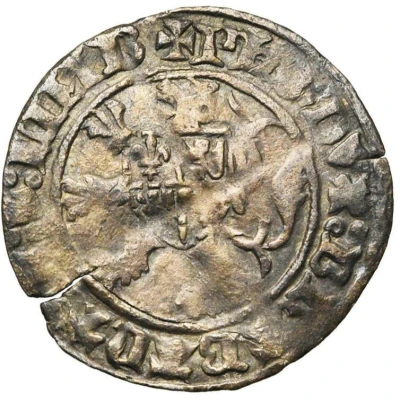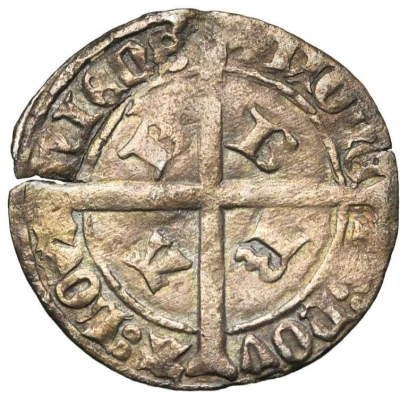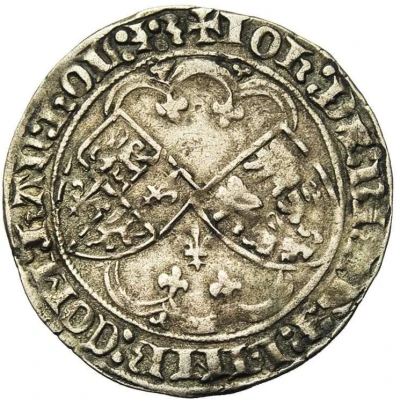
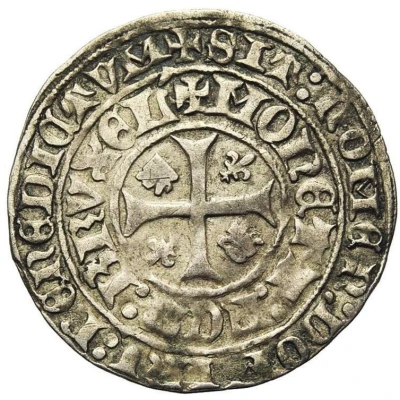

© Jean Elsen & ses Fils s.a.
Groat "Drielander" - John IV ND
| Billon (.319 silver) | 2.05 g | 26 mm |
| Issuer | Duchy of Brabant (Belgian States) |
|---|---|
| Duke | John IV (1415-1427) |
| Type | Standard circulation coin |
| Years | 1420-1421 |
| Value | 1 Groschen (Groot) |
| Currency | Groot (1183-1506) |
| Composition | Billon (.319 silver) |
| Weight | 2.05 g |
| Diameter | 26 mm |
| Shape | Round (irregular) |
| Technique | Hammered |
| Demonetized | Yes |
| Updated | 2024-10-04 |
| Numista | N#308643 |
|---|---|
| Rarity index | 97% |
Reverse
SHort cross pattee inside double legend, two lions and two fleur-de-lis in the angles
Script: Latin (uncial)
Lettering:
(Interior): ✠ MONETA: FCA: BRVXEL''
(Exterior): ✠ SIT: nOMEn: DOMInI: BEnEDICTVM
Lettering (regular font):
(INTERIOR): ✠ MONETA: FCA: BRVXEL''
(EXTERIOR): ✠ SIT: NOMEN: DOMINI: BENEDICTVM
Translation:
Coin made in Brussels
Blessed be the name of the Lord
Comment
Drielander refers to the monetary convention between Brabant, Hainaut and Holland, during which this coin was issued.Interesting fact
The "Drielander" Groat coin from the Duchy of Brabant (now part of Belgium) is interesting because it was issued during a time of great political and economic change in the region. The coin was minted in 1420-1421, during the reign of John IV, Duke of Brabant, who was known for his efforts to strengthen the economy and increase trade in the region. The coin's unique design, featuring a crowned shield with three lions, symbolized the unity of the three regions that made up the Duchy of Brabant: Brabant, Lothier, and Limburg. Additionally, the use of billon (a silver-copper alloy) in the coin's minting process was a common practice during this time period, as it allowed for the creation of coins with a lower silver content, making them more accessible to the general population.
